We finally have AMD’s answer to the Nvida RTX 40 series: the Radeon RX 7900 XT and Radeon RX 7900 XTX, the red team’s first graphics cards build on the RDNA 3 architecture. These are both high-end GPUs, set to cost $899 and $999 respectively when they release on December 13th, but you’ll note those prices are oodles cheaper than the $1199 RTX 4080 and the $1599 RTX 4090.
They’re also structurally distinct from the current Radeon RX 6000 cards to an extent that, frankly, is quite surprising to see from AMD GPUs. RDNA 3 uses a Ryzen CPU-inspired chiplet design, where the GPU is split up into different sections, and the new media engine is engineered for the 4K gaming monitors of the future as much as it is for current PC hardware.
How exactly these two cards will perform in games remains to be (reliably) seen, though AMD also announced a helping hand in FSR 3. This new version of the FidelityFX Super Resolution upscaler will not only reduce the strain of rendering frames, but will likely add its own ‘Fluid Motion Frames’, in what looks like a direct challenge to Nvidia DLSS 3 and its AI frame generation tech.
There’s a lot to chew on here, so let’s do just that, with all the newly announced Radeon RX 7900 XT and RX 7900 XTX specs and availability deets.
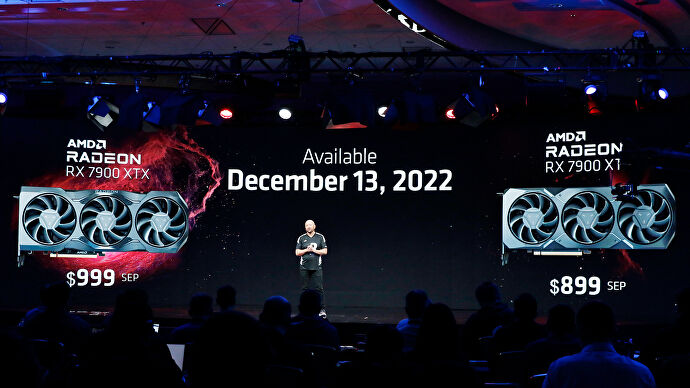

AMD Radeon RX 7000 series prices
UK prices are TBD, but AMD confirmed the flagship RX 7900 XTX will launch with an MSRP of $999, while the RX 7900 XT is set at $899. Expect more expensive versions of both, due to board partners making additions like factory overclocks or upgraded coolers.
The fact that these are the only two official RX 7000 graphics cards may disappoint those who were hoping for more affordable, 1080p/1440p-focused graphics cards, given Nvidia also launched their newest GPU generation with luxury 4K engines. But both the RX 7900 XT and RX 7900 XTX are hundreds of dollars less than their new-gen GeForce rivals, and undercut older premium cards like the RTX 3090 and RTX 3090 Ti as well. Their value will depend on how well they perform in comparison, but it’s at least encouraging that you won’t have to break four figures for AMD’s top tier.


AMD Radeon RX 7000 series release date
Both the RX 7900 XT and RX 7900 XTX will go on sale on December 13th 2022 – no staggered launches here. That said, it’s maybe worth noting that FSR 3 won’t be available until early 2023. That’s contrast to DLSS 3, which was ready to go – albeit with limited game support – when the RTX 4090 released back in October.
No word yet on any future mid-range or low-end RX 7000 graphics cards, though since the RX 7900 XT and RX 7900 XTX are only releasing with a couple of weeks left in the year, don’t expect any more additions to the RDNA 3 family until 2023.
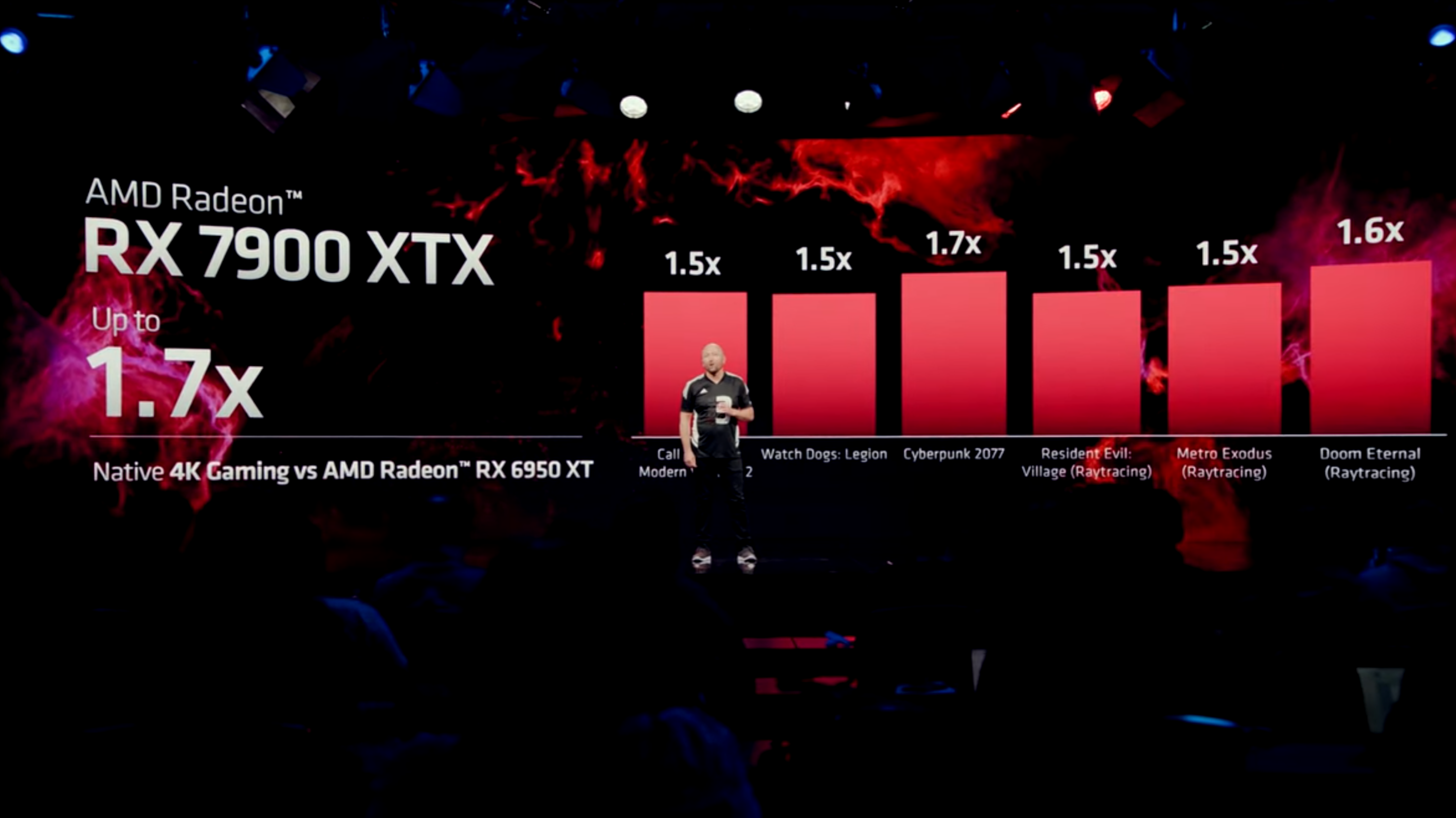

AMD Radeon RX 7000 series specs
If you’re just here for the core specs, here, have a table. You can see how both the RX 7900 XT and Radeon RX 7900 XTX are overflowing with VRAM, while the extra hundred bucks on the Radeon RX 7900 XTX buys you slightly faster clock speeds and a handful of extra compute units (core clusters). The Radeon RX 7900 XTX also, I spy, has a significantly lower power rating than the 450W RTX 4090.
| Radeon RX 7900 XT | Radeon RX 7900 XTX | |
|---|---|---|
| Compute units | 84 | 96 |
| Ray accelerators | 84 | 96 |
| Game frequency | 2000MHz | 2300MHz |
| VRAM | 20GB | 24GB |
| Memory type | GDDR6 | GDDR6 |
| Power usage | 300W | 350W |
| MSRP | $899 | $999 |
There’s plenty else going on under the hood. RDNA 3, and by extension the RX 7000 range, represents a major shift in how AMD constructs its GPUs. Normally, the GPU is monolithic, i.e. just one big chip. RDNA 3, taking a page out of AMD’s own Ryzen AND Epyc processors, instead uses a chiplet design: the GPU is divided into one 5nm graphics compute die (GCD) and six 6nm memory cache dies (MCDs). Combined, the MCDs can apparently deliver 2.7x the peak memory bandwidth of RDNA 2, while the GCD is where most of the graphics magic happens, with special hardware for ray tracing acceleration and AI features.
Chiplet designs aren’t inherently better than monolithic GPUs, and AMD has had to come up with an incredibly fast 5.3TB/s interconnect just to make sure that the different parts can communicate with each other quickly enough. But there are advantages: chiefly, it allows the GPUs to benefit from more efficient 5nm hardware, but only where it counts most, with the MCDs using a cheaper manufacturing process with better yields. In theory this should mean next-gen performance while still keeping costs down, with savings passed on to the consumer. Hopefully.
The new GCD is also aiming to close the gap with Nvidia on ray tracing performance, with AMD promising “1.5x more rays in flight” and improvements to how RDNA 3 processes newly generated rays.
As for how these changes translate into actual performance, we’ll have to wait for some benchmarks outside of AMDs own. The company say the RX 7900 XTX is between 1.5x and 1.7x faster than the RX 6950 XT in games like Call of Duty: Modern Warfare 2, Cyberpunk 2077 and ray-traced Metro Exodus, though a more important comparison would surely be against the RTX 4090. Or the RTX 4080, at least.
Speaking of, anyone who picks up an RX 7000 series card won’t have to worry about needing an RTX 40 series-style power adapter, as they’ll take your PSU’s regular 8-pin power cables as they are. A relief, perhaps, considering how many RTX 4090 adapters have been melting lately.
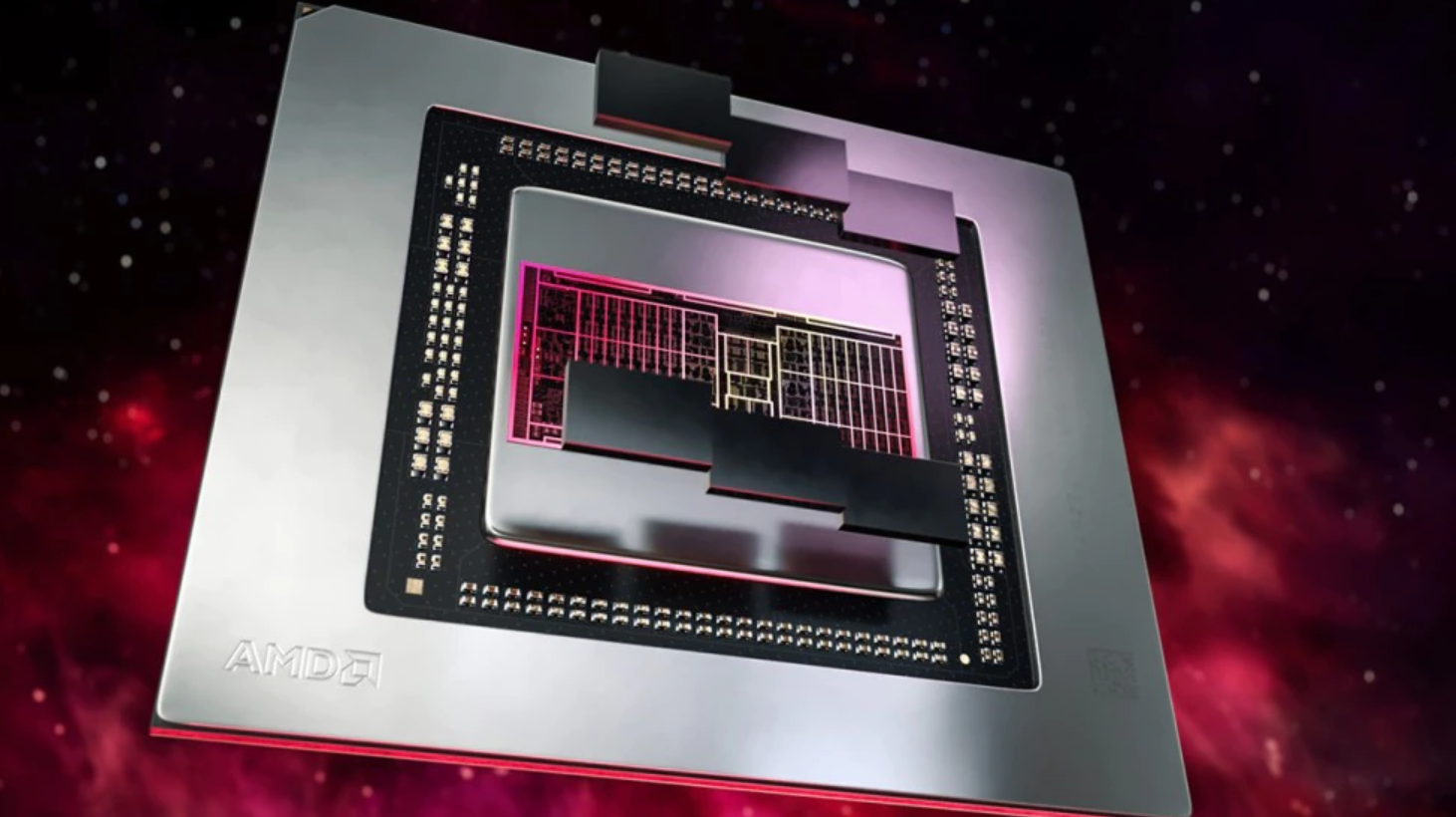

AMD Radeon RX 7000 series features
The RX 7900 XT and RX 7900 XTX will be the first graphics cards to support the DisplayPort 2.1 connection standard, meaning they’ll be able to fully support gaming monitors that are largely theoretical – think 4K/480Hz and 8K/165Hz.
The DisplayPort 1.4 and 1.4a standards used by other GPUs, including the RTX 4090 and 4080, will still handle up to 144Hz at 4K. And monitors with 2.1 inputs won’t even be available until 2023 at the earliest. But if you are a display fiend and dream of playing on, say, some kind of fast 5K ultrawide, or running multiple 4K screens at once, 2.1 will be the better connector from a futureproofing standpoint.
The RX 7000 also reaches parity with the RTX 40 series on supporting AV1 encoding. This isn’t a gaming feature per se but could be useful for streaming, or capturing game footage to edit later; AV1 is miles better than other mainstream encoders at balancing high quality with low data usage.
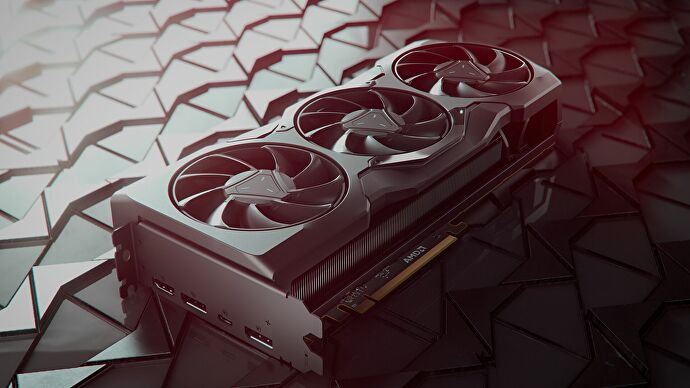

AMD FSR 3: a new DLSS 3 rival
AMD also used their Radeon RX 7900 XT/RX 7900 XTX reveal event to tease their upcoming FSR 3 upscaler. It’s unfortunate that this won’t be ready in time for the new cards’ release day, as it sounds like it’s gunning for the same kinds of massive FPS gains as DLSS 3 – and not just from the core temporal upscaling.
In addition, FSR 3 will use “Fluid Motion Frames technology” to produce up to twice the FPS improvements of FSR 2 (previously known as FSR 2.0). AMD didn’t actually elaborate on Fluid Motion Frames and how they work, but my money’s on them being interpolated frames – generated by the GPU using visual data from previous frames – that are inserted between the traditionally rendered frames, enhancing overall smoothness. In other words, basically what DLSS 3 does with its AI-generated frames, but with less AI. FSR 2.0 already uses data from other frames to improve its upscaling quality, so creating entire new frames would be the next logical step.
Interestingly, AMD never suggested that RDNA 3 hardware would be essential to FSR 3, so like previous versions it could potentially become available on older cards as well – and not just Radeon models, but Nvidia and Intel graphics cards too. Again, just speculating at this point, but that could be a huge deal in terms of boosting performance on aging PCs. If only in the games that add support for FSR 3 on their end, of course, and those haven’t been announced yet either.
Bringing you the latest news and reviews for games on Steam!

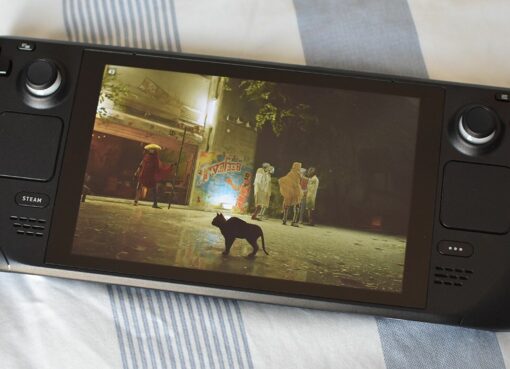


Comment here